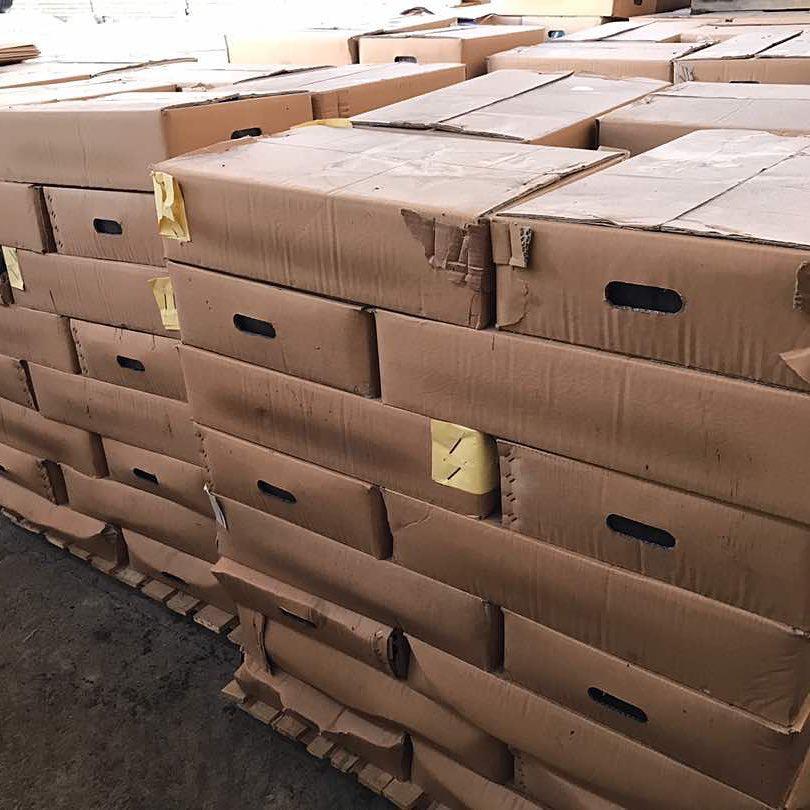Blown Bitumen 75/25

Summary of Blown Bitumen 75/25
Blown Bitumen 75/25 or Oxidized Bitumen or Blown Asphalt is produced by blowing hot air into the penetration bitumen. This action makes the bitumen more rubbery than its original formula and it becomes harder bitumen. This bitumen recovery the weight loss under heating. Due to low thermal sensitivity, the softening point is much higher than regular bitumen and the penetration index (PI) is higher than road construction bitumen (8>PI>2) due to the letter has a gel-like structure because of asphalt accumulation. Blown Bitumen 75-25 is Semi Solid grade of pure petroleum bitumen. Special physical properties of its grade can be used in different applications in the construction business.
Blown Bitumen 75/25 is produced by the air-blowing of penetration grade bitumen. This is done at high temperatures, resulting in a material of a much higher penetration index. RAHA Bitumen 75/25 is based on petroleum bitumen which is made by blowing bitumen 60/70 by very hot air. The designation of the Blown Bitumen 75/25 refers to the midpoint of the softening point acceptance criteria.
RAHA Bitumen 75/25 is produced by either Continuous or Staggered Blowing Process. Heated Penetration Grade Bitumen under controlled environment is blown with air which controls the Oil Content in the Bitumen while it oxidized. The different grades for suited applications produced are designated by two numbers to indicate the mid-points of their softening point and penetration ranges.
As said before, Blown Bitumen 75-25 is based on petroleum bitumen which is made by blowing bitumen 60/70 by very hot air. In addition, the numbers relate to the midpoint of the material’s softening point and penetration respectively. The softening point value measured by Ring and Ball method as determined by ASTM D36. Also, the penetration value is in 1/10 mm as determined by IP49 or ASTM- D5.
RAHA Bitumen Co. is also capable of producing other grades of Oxidized Bitumen according to the specifications of individual clients. Some of the major advantages of Oxidized Bitumen are that it is completely water resistant, highly flexible and durable. Further, it is chemically very stable. Oxidized bitumen is a very flexible compound that is not only chemically stable but also a very durable compound apart from being completely water resistant. Lastly, Oxidized Bitumen has some very prominent technical advantages that makes it a very sought after compound in various applications.
Uses of Blown Bitumen 75/25
Blown Bitumen 75/25 is a solid or semi-black solid material and gradually liquid when heated. Oxidized Bitumen grades are blown or oxidized Asphalt ‘s which are produced by passing air through soft bitumen under controlled temperature conditions. This process gives the bitumen more rubbery properties than penetration or hard grade bitumens and a variety of uses in industrial applications.
These grades are suitable for sealing saw cuts and joints where there is expected to be the minimum amount of moving in the joint. Their wide temperature range prevents bleeding in high-temperature applications. They can also be used for industrial applications such as pipe coating, roofing, waterproofing, flooring, mastics, sound damping, carpet backing, adhesive and electrical applications. Hard bitumen under controlled temperature conditions is widely used as an anti-slip layer compound in the piling industry, for the manufacture of roofing felts, the roofing and waterproofing industries, for sound dampening felts and under carriage sealant in the automotive industry, electric cable joint protection, joint filling compound, sealant compound, and many others. Also used in sealing saw cuts and joints where expected movements are minimum.
Technical Advantages of Blown Bitumen 75/25
- Durability
- Flexibility
- Water Resistant
- Chemical Stability
Compared to paving grade bitumen:
- Reduced temperature susceptibility
- Exhibits a more ‘solid’ nature at ambient temperatures
- High penetration index
Recommendations for Handling / Storage
Heating of packaged bitumen is a critical phase in most of the final uses. Typically, the packaged material is heated and melted in boilers out on site.
However, control at the heating phase is very important in terms of health and safety as well as in maintaining the quality of the product.
Note must be taken of the maximum safe handling temperature of 230 C and this should not be abused. Bitumen is a poor conductor of heat, consequently, control of the heating phase is of paramount importance.
The Oxidized Bitumen material should be broken up prior to placement in the boiler. This exposes a larger surface area to the heat and encourages a more even heating regime. Without the larger exposed surface area, aggressive heating at the base and sides of the boiler may well result in localized overheating, altering the characteristics of the RAHA modified bitumen and potentially causing thermal cracking of the bitumen, creating the release of low lash vapors. The flash point of the oxidized bitumen then becomes irrelevant; as these low flash vapors determine the fire risk.
Melted bitumen should not be left in the boiler and reheated from cold, as there is then a high potential for localized overheating around the heating area (lack of convection means poor heat transfer) and potential development of a pressurized pocket of low flash vapors.
Be aware of the placement of any temperature monitoring or control devices. As a result of the poor thermal conductivity of the bitumen, a thermometer in the bitumen some distance from the heat source could read significantly different (even hundreds of degrees) from the true temperature of the bitumen near the heat source.
Health & Safety
Workers should wear protective masks, gloves, and goggles during application. The asphalt can be removed from equipment and tools with kerosene or gasoline. Care should be taken when heating Blown Bitumen 75/25 to avoid overheating. For Health and Safety information, please make reference to the relevant MSDS.
Application of Blown Bitumen 75/25
RAHA Bitumen 75/25 is produced by either Continuous or Staggered Blowing Process. Heated Penetration Grade Bitumen under controlled environment is blown with air which controls the Oil Content in the Bitumen while it oxidized. The different grades for suited applications produced are designated by two numbers to indicate the mid-points of their softening point and penetration ranges.
The Blown Bitumen 75/25 should be heated double temperature against the softening point to be able to have flow and viscosity.
Surfaces must be dry, clean and free of loose particles, formwork, curing products, irregularities, slurry, etc.
Packing of Blown Bitumen 75/25
RAHA GROUP is the manufacturer of Blown Bitumen 75/25 in various packing, including bitumen 75/25 is available in 20 & 50 kg Kraft Paper Bags / Poly Amide Bags, 25 kg Carton box and 150, 180, 200kg Steel Drums. In addition, oxidized bitumen packing also palletize, 40 bags can stack on the pallet. 20 pallet can load to the 20ft container.
Technical Data Sheet of Blown Bitumen 75/25
| Bitumen 75/25 | Test method | Unit | Specification |
| Specific gravity @25/25 C | ASTM D70 | (Kg/m3) | 1.05 approx. |
| Penetration @ 25°c | ASTM D5 | mm/10 | 20/30 |
| Softening point °c | ASTM D36 | °C | 70/80 |
| Loss on heating(wt) % | ASTM D6 | Wt. % | 0.2 max |
| Flashpoint c | ASTM D92 | °C | 250 min |
| Solubility is CS2(wt) % | ASTM D4 | Wt. % | 99.5 max |
| Spot test | A.A.S.H.T.O 102 | — | Negative |

